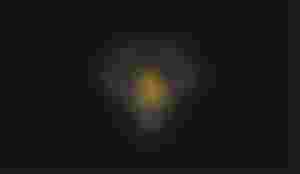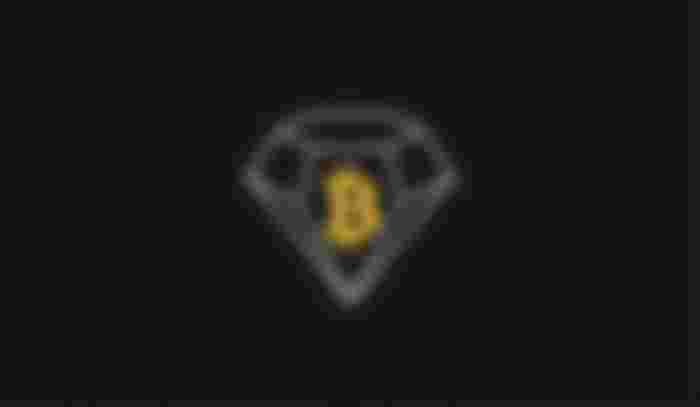
The cryptocurrency that started it all, Bitcoin is the first digital currency to solve the ‘double spending’ or counterfeiting problem without the aid of a central authority, such as government or bank, making it truly a peer-to-peer electronic cash system.
However, disagreements to the underlying protocol have cause various members of the community to push for radical changes. These changes are called forks, originating from a metaphor based on a literal expression, ‘a fork in the road’, a point where a choice of the two or more possibilities needs to be taken.
The consensus or agreement of all or a majority of the network participants is needed to implement changes. A disagreement and uprising of a faction often results to the network being split into two, which also gives rise to the existence of two coins. Thus, forks may be divided into two categories – soft forks and hard forks.
A soft fork refers to a rule change that is backward compatible; which means that the new rule is interoperable with the legacy protocol. While a hard fork signifies a rule change that does not have backward compatibility; which means that there is a permanent split from the legacy rule to form another cryptocurrency.
Bitcoin has undergone several forks over the course of its history. In this article, I will discuss notable Bitcoin forks as well as a fork of its fork and a fork of a fork of its fork. Apologies, I do not mean this to become a tongue twister or a source of confusion. To simplify, this article is about Bitcoin, its brothers (and sisters), first cousin and second cousin.
Bitcoin Cash (BCH)

Bitcoin Cash is considered as the most successful fork of Bitcoin. It came into existence at block height 478,559 on August 1, 2017. It has consistently maintained its rank within the top 10 cryptocurrencies by market capitalization, owing its success to the backing of many prominent figures in the cryptospace and exchanges.
The block size limit is a controversial issue within the Bitcoin community. There is a disagreement over whether such limit should be part of the protocol or only a temporary measure intended to be an anti-spam feature. And if the limit should be part of the protocol, another issue arises, its proper size.
Bitcoin Cash implemented an increased block size of eight (8) megabytes, with an adjustable level of difficulty to ensure the chain’s survival and faster transaction verification speed. This is higher compared to Bitcoin’s blocks which currently have a maximum theoretical size of four (4) megabytes.
The larger block size of Bitcoin Cash means that wait times are shorter, more transactions can be processed per second, and transaction fees are lower compared to Bitcoin. Although a larger block size improves scalability, it also makes Bitcoin Cash less secured than Bitcoin.
In addition to increased block size, the developers and miners of Bitcoin Cash also rejected the adoption of a segregated witness technology (SegWit). They believed that SegWit was not able to address the fundamental problem of scalability in a meaningful way and only undermined the decentralization and democratization of Bitcoin.
Bitcoin Gold (BTG)

Bitcoin Gold came into existence after a hard fork of Bitcoin at block height 491,406 on October 24, 2017. One of the major issues which prompted the development of Bitcoin Gold is the mining process which is concentrated to the hands of few. Its developers believe that such concentration weakens the decentralization of Bitcoin.
While its fundamentals remain similar to that of Bitcoin, Bitcoin Gold could only be mined on common graphic processing units (GPUs), instead of specialty application-specific integrated circuits (ASICs). The purpose is to avoid monopoly of big players who could afford expensive ASIC miners and to allow anyone to mine, thereby restoring decentralization and independence.
Bitcoin Diamond (BCD)

Bitcoin Diamond is a fork of Bitcoin that occurred at the predetermined height of block 495,866 on November 24, 2017. Its developers have incorporated a new proof-of-work algorithm that is resistant to ASIC mining and friendly to GPU miners and increased its block size limit to enhance the original Bitcoin features with greater speed, protection and scalability.
The total supply of Bitcoin Diamond is 210,000,000 which is ten times higher than that of Bitcoin and all other forks. Its block size limit is 8 megabyte which can even go higher up to 32 megabyte with Segwit adoption. Moreover, it is also lightning compatible and is developing its functionality to allow for quicker peer-to-peer payments.
Bitcoin Satoshi Vision (BSV)

Bitcoin SV is the result of a hard fork of Bitcoin Cash on November 15, 2018. The miners and developers of Bitcoin SV believe that the only way for Bitcoin protocol to massively scale is to further increase its block size. By doing so, it also fulfils the vision set out by Satoshi Nakamoto in the Bitcoin whitepaper.
The fork was a result of a debate within the Bitcoin Cash community on a set of improvement proposals to make transactions and on-chain operations more efficient. As a result, the block size limit of Bitcoin SV is 128 megabyte, which translates to faster transaction verification speed and lower transaction fees than Bitcoin Cash.
In February of this year, Bitcoin SV underwent a network upgrade that removed almost the existing block size limit. Instead of being hard-coded in the node software, block size is now a parameter that miners can reduce manually. The only concern is it could potentially lead to bigger blocks to be considered invalid if not all miners agree to a particular value.
Bitcoin Private (BTCP)

Bitcoin Private is somewhat unique compared to all other Bitcoin forks. The reason is that it is only a Bitcoin fork but a fork of Zclassic Chain as well. Zclassic was itself a fork of Zcash, which in turn was a source code copy of Bitcoin. Hence, Bitcoin Private may be considered as a fork of a fork of a Bitcoin fork.
According to its whitepaper, the goal of Bitcoin Private is to fulfil the vision of Satoshi Nakamoto while ensuring privacy for its users. It uses the same privacy technology as ZClassic which makes the sender, recipient and other transactional metadata unidentifiable. It also supports a slightly increased block size limit which allows faster transaction speed than Bitcoin.

There are more than 100 Bitcoin forks and most of these occurred between 2017 and 2018. Many of these were not able to build a strong community and following, hence, are in the bottom of market capitalization rankings or no longer in circulation. Worse, some turned out as scams at the time of their creation. Presently, only Bitcoin Cash, Bitcoin SV, Bitcoin Gold and Bitcoin Diamond remain in the top 100 by market capitalization.
It is important to bear in mind that while some considers Litecoin and ZCash as Bitcoin forks, these two neither qualifies as soft or hard forks. Rather these are source code copy, which means that their code was derived from Bitcoin and was subsequently modified. The forks discussed in this article are those which shares the same block zero or genesis block with Bitcoin.
Furthermore, not all cryptocurrencies that bear the name ‘Bitcoin’ are Bitcoin forks. Some are unique blockchain with its own unique protocol like Bitcoin Rhodium, while others are tokens operating under the Ethereum platform such as Bitcoin Red (BTCRED) and Bitcoin Silver (BTCS).
Let us know in the comment section the Bitcoin forks which you think could replicate the success of Bitcoin, or at least reach a thousand dollar in value in the coming years. Share to us your opinion about these forks. I will be glad to read your ideas and to share my opinion.
(Welcome to Planet Crypto. We discuss necessary information and updates regarding the cryptocurrency market regularly. So if you want to get updated, do not forget to hit the follow button and smash the like button.
I am not a financial or investment advisor. The purpose of this channel is to raise awareness about blockchain, the technology which will make the greatest impact in the decades to come and help in the mass adoption of cryptocurrencies. Please only consider this as educational or informational. This is never intended as a financial or investment advice.)
Resources:
1. Bitcoin Cash Wesbite, https://www.bitcoincash.org
2. Bitcoin SV Website, https://www.bitcoinsv.io
3. Bitcoin Gold Website, https://www.bitcoingold.org
4. Bitcoin Diamond Website, https://www.bitcoindiamond.org
5. Bitcoin Private Website, https://www.btcprivate.org
6. Bitcoin Magazine, https://www.bitcoinmagazine.com/what-is-bitcoin/what-are-bitcoin-forks
7. Reiff, Nathan. A History of Bitcoin Hard Forks. Investopedia, https://www.investopedia.com/tech/history-bitcoin-hard-forks







Nice